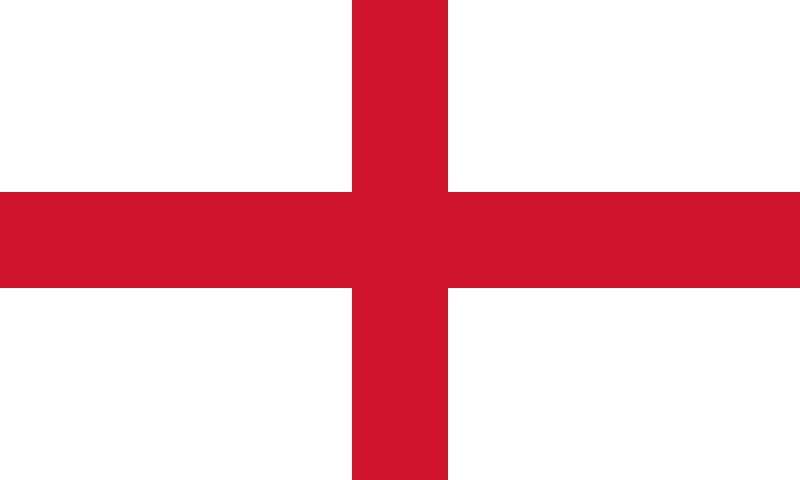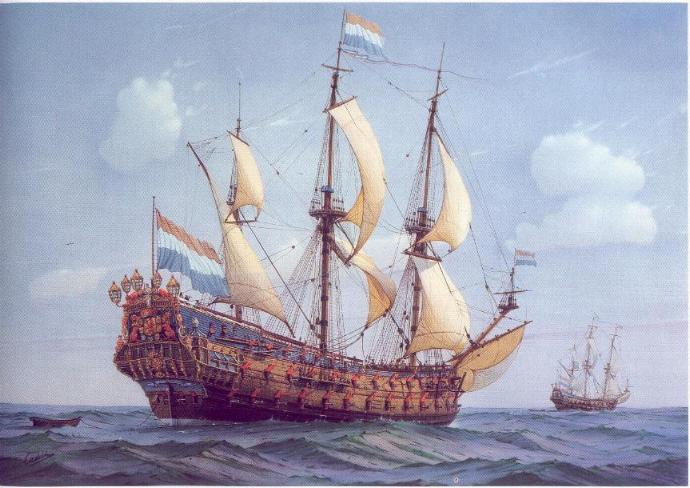 |
 |
 |
 |
 |
 |
BATTAGLIA NAVALE DI BARFLEUR
NAVAL BATTLE OF BARFLEUR
(29 MAGGIO - 02 GIUGNO 1692)
LA PIU' GRANDE BATTAGLIA NAVALE DELLA STORIA
|
|
I PROTAGONISTI
THE PROTAGONISTS
|
ZEVEN PROVINCIEN (1665 - 1694) Vascello a 2 ponti da 76 cannoni |
||||||||||||||||||||||||||||||||||||||||||||||||||||||
|
|
|||||||||||||||||||||||||||||||||||||||||||||||||||||
 |
 |
|||||||||||||||||||||||||||||||||||||||||||||||||||||
| ZEVEN PROVINCIEN 1 | ZEVEN PROVINCIEN 2 | |||||||||||||||||||||||||||||||||||||||||||||||||||||
| STORIA | HISTORY | |||||||||||||||||||||||||||||||||||||||||||||||||||||
|
La Zeven ProvinciŽn (la "Sette Province") era una nave
olandese della linea, originalmente armata con 80 cannoni; il nome della
nave fu scritto anche come La 7 ProvinciŽn. La traduzione letterale Ť 'Le Sette Province", il nome che si riferisce al fatto che la Repubblica olandese nel 17 secolo era una confederazione di sette province autonome. Il vaso fu costruito originalmente nel 1664-65 per l'Ammiragliato del Maas in Rotterdam, da Costruttore navale Master Salomon Jansz trasporti con furgone luogo tranquillo Tempel. La nave servž come nave ammiraglia di Ruyter durante la Seconda Guerra anglo-olandese, prendendo che parte nel duro, lottÚ contro la vittoria olandese nei quattro giorni di guerra, la sconfitta amara nel giorno della Battaglia St. James's Day e comportandosi come un posto di comando cosž come bloccando il Thames durante l'Incursione sul Medway. Il vascello diede un buon conto di lui in tutta la guerra, anche se fu parzialmente demolita durante la Battaglia di Quattro giorno. De Ruyter usÚ De Zeven ProvinciŽn come la sua nave ammiraglia durante la terza Guerra anglo-olandese di 1672-1673. La nave servž in tutte le quattro battaglie di maggiore contro gli inglesi combinati e flotta francese, mentre lottando nella Battaglia di Solebay, la primo e seconda Battaglia di Schooneveld e, in possibilmente il suo piý grande momento, alla Battaglia del Texel. Nel 1692, la nave, ora armata con solamente 76 cannoni, combattŤ nelle Battaglie di Barfleur e La Hogue durante la Guerra della Grande Alleanza. Il vascello fu danneggiato severamente durante la lotta e, nel 1694, De Zeven ProvinciŽn fu demolita. Una replica di pieno-taglia della nave Ť stata costruita al Batavia-werf di 2008, (i bacini) in Lelystad. Nella sera di ottobre 13 2008 un fuoco esplose attraverso il Batavia-werf. Anche se i cantieri navali, molti palazzi degli uffici e parte di un ristorante furono distrutte, la replica di "De Zeven ProvinciŽn" rimase indenne. |
De Zeven ProvinciŽn was a Dutch ship of the line,
originally armed with 80 guns; the name of the ship was also written as De
7 ProvinciŽn. The literal translation is 'The Seven Provinces', the name referring to the fact that the Dutch Republic in the 17th century was a confederation of seven autonomous provinces. The vessel was originally built in 1664-65 for the Admiralty of the Maas in Rotterdam, by Master Shipbuilder Salomon Jansz van den Tempel. The ship served as Admiral Michiel de Ruyter's flagship during the Second Anglo-Dutch War, taking part in the hard fought Dutch victory in the Four Days Fight, the bitter defeat at the St. James's Day Battle, and acting as a command post as well as blockading the Thames during the Raid on the Medway. The vessel gave a good account of itself throughout the war, although it was partially dismasted during the Four Day's Fight. De Ruyter used De Zeven ProvinciŽn as his flagship during the Third Anglo-Dutch War of 1672-1673. The ship served in all four major battles against the combined English and French fleet, fighting in the Battle of Solebay, the first and second Battle of Schooneveld and, in possibly its greatest moment, at the Battle of the Texel. In 1692, the ship, now armed with only 76 guns, fought at the Battles of Barfleur and La Hogue during the War of the Grand Alliance. The vessel was severely damaged during the fight and, in 1694, De Zeven ProvinciŽn had to be broken up. De Zeven ProvinciŽn measured, in English Feet, approximately 151 ft long by about 40 ft (12 m) wide by a little over 15 ft (4.6 m) deep. It was originally armed with 12 36-pdrs and 16 24-pdrs on the lower deck (although this had been changed to an all 36-pdr battery by the time of the Third Anglo-Dutch War), 14 18-pdrs and 12 12-pdrs on the upper deck, and 26 6-pdrs on the forecastle, quarterdeck, and poop deck. As of 2008, a full-size replica of the ship is being constructed at the Batavia-werf (docks) in Lelystad. On the evening of October 13th 2008 a fire ripped through the Batavia-werf. Although the sailmaking shed, several office buildings and part of a restaurant were destroyed, as were the sails of fellow replica ship Batavia, the replica of "De Zeven ProvinciŽn" nearby was undamaged. |
|||||||||||||||||||||||||||||||||||||||||||||||||||||
BATTAGLIA NAVALE DI BARFLEUR / NAVAL BATTLE OF BARFLEUR
I PROTAGONISTI / THE PROTAGONISTIS
LE PIU' GRANDI BATTAGLIE NAVALI /NAVAL BATTLE
NAVI DA GUERRA / WARSHIPS AND BATTLESHIPS
PORTAEREI NELLA STORIA /AIRCRAFT CARRIERS